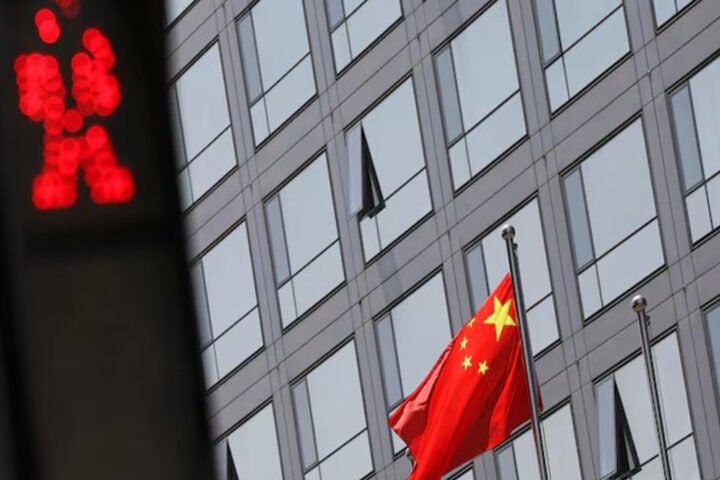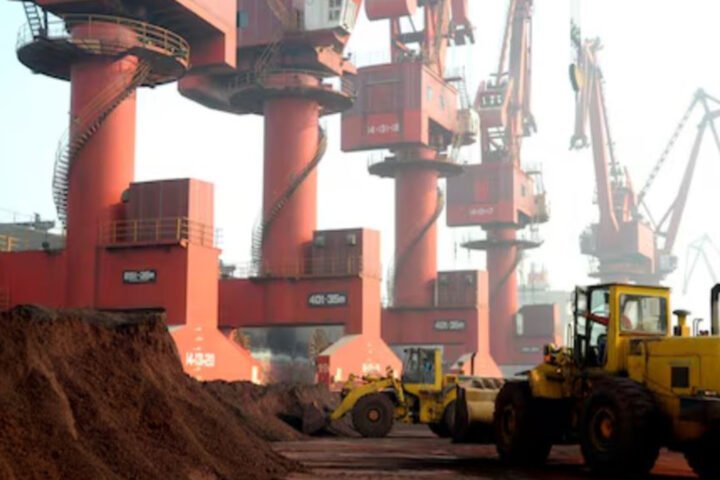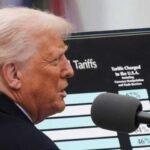Former U.S. President Donald Trump announced on August 6, 2025, a sweeping new trade policy featuring a 100% tariff on all imported semiconductors, exempting only chips produced domestically. This announcement, made in Washington, D.C., significantly aims to reshore semiconductor manufacturing and diminish America’s reliance on foreign suppliers, particularly from Taiwan, South Korea, and China., reports 24brussels.
The Trump 100% semiconductor tariff is not just a trade policy—it’s an economic declaration of technological independence.
Trump stated that the objective is to incentivize companies to resume chip production within the U.S., remarking:
“If you’re building in America, there’s no charge. We want this industry to come home.”
The policy targets critical components powering the modern economy, where semiconductors drive devices ranging from smartphones and laptops to military technology and AI infrastructure. Notably, over 90% of advanced chips are produced in East Asia, with Taiwan Semiconductor Manufacturing Company (TSMC) controlling a significant portion of global capacity.
National security, economic sovereignty, and industrial revival are now tied to who controls the chip.
This aggressive tariff follows rising geopolitical tensions over Taiwan and challenges in critical supply chains, elevating semiconductor independence as a primary focus in U.S. strategy.
Immediate Economic Repercussions and Corporate Responses
The fallout from Trump’s announcement was swift. Shortly after, Apple Inc. revealed plans for a record-breaking $600 billion investment in domestic manufacturing—marking the largest corporate commitment to U.S. production to date.
Bold takeaway: This isn’t just government policy—it’s a full-scale industrial mobilization.
The investment will facilitate:
- Expansion of semiconductor fabrication plants (fabs) in Arizona, Texas, and Ohio,
- Development of next-generation AI chips for key consumer products,
- Creation of over 250,000 new jobs across engineering and manufacturing sectors.
Apple declared that the new tariff structure necessitated an accelerated approach to its domestic production plans, coinciding with long-term ambitions for supply chain resilience and technological leadership.
When the rules change, the world’s biggest tech companies adapt—fast.
Other major tech players are likely to follow suit. Intel, which has faced intense competition from TSMC, is expected to benefit from government backing as it boosts production at its new Ohio mega-fab with support from the CHIPS Act. Additionally, TSMC is poised to expedite its U.S. efforts to circumvent the tariff, though scaling operations and hiring skilled labor present ongoing challenges.
Global Technology Contest: U.S. vs. China
The Trump 100% semiconductor tariff positions itself within a wider global contest for technological supremacy between the U.S. and China, increasingly likened to a new Cold War.
Chips are the new oil—controlling them means controlling the future of AI, defense, and economic power.
China has actively sought to reduce its dependency on foreign chips, investing heavily in domestic semiconductor initiatives. In retaliation, the U.S. has enacted export controls on advanced chipmaking technologies, aiming to stifle China’s ability to manufacture cutting-edge processors.
Trump’s tariff amplifies pressure not only on China but also on all foreign producers. By rendering imported chips excessively costly, the U.S. is pushing for a bifurcation within the global technology ecosystem, segregating American-centric supply chains from those based in Asia.
This policy doesn’t just affect prices—it could redefine global trade alliances.
Looming tensions with Taiwan, which houses TSMC and is critical to U.S.-China relations, pose significant risks. Any potential conflict could disrupt global semiconductor production, making domestic capacity a matter of national security.
In this context, South Korean giant Samsung and Japanese firm Rapidus are also enhancing U.S. operations, indicating a shift in the semiconductor landscape towards North America.
Short-term Costs vs. Long-term Goals
Although this tariff seeks to bolster U.S. manufacturing, analysts caution against short-term repercussions:
- Increased electronics prices: A 100% tariff could elevate costs for smartphones, laptops, and vehicles by 15–30% initially.
- Supply chain delays: Firms dependant on foreign chips may encounter disruptions, especially in automotive and consumer electronics.
- Retaliation scenarios: China and allied nations might implement counter-tariffs on U.S. tech exports, escalating trade tensions.
Reshoring comes at a price—and consumers may pay it first.
Nonetheless, the long-term vision emphasizes establishing a self-sufficient and innovative semiconductor industry within the U.S. The CHIPS Act, enacted in 2022, has already committed $52 billion in subsidies for domestic chip fabrication, with Trump’s tariff reinforcing these efforts.
Industries such as defense, aerospace, and artificial intelligence stand to gain the most. Ongoing concerns about foreign chip reliance jeopardizing national security mechanisms underscore the need for a robust domestic supply chain.
Apple’s Strategic Investment: A Shift in U.S. Tech Manufacturing
Apple’s substantial investment highlights the critical importance of the semiconductor sector. The company, which currently contracts TSMC for chip manufacturing, faces an unsustainable model under the new tariff conditions.
Apple isn’t just adapting to policy—it’s betting its future on U.S. manufacturing.
The $600 billion outlay will occur over the following decade, encompassing:
- A new AI chip factory in Ohio in collaboration with Intel,
- Expansion of assembly and testing operations in Texas,
- Partnerships with American universities to train 100,000 new semiconductor engineers.
CEO Tim Cook asserted:
“This is about more than profits. It’s about ensuring that the technology of the future is built in the country that invented it.”
Apple’s endeavor is projected to triple U.S. semiconductor production by 2030, positioning the nation as a global frontrunner in advanced chip manufacturing.
Challenges Facing the U.S. Semiconductor Industry
Despite these advancements, several formidable challenges persist:
- Skilled labor shortages: The U.S. faces a significant gap in qualified engineers and technicians capable of operating cutting-edge fabs.
- Scaling timeframes: Constructing new manufacturing facilities can take between 5–7 years, while demand for advanced chips continues to surge.
- Ongoing competition: Firms like TSMC and Samsung maintain a technological lead, with state-of-the-art chips under development.
Tariffs can force relocation, but they can’t instantly create technological leadership.
Moreover, the policy risks alienating traditional allies. Nations such as the Netherlands and Japan may view U.S. approaches to trade as less favorable.
Nevertheless, a fundamental message resonates: the U.S. is determined to reclaim its technological future.
Conclusion: A Pivotal Moment for U.S. Industrial Policy
The Trump 100% semiconductor tariff extends beyond a mere campaign promise; it embodies a comprehensive industrial strategy designed to secure the U.S.’s technological sovereignty.
This is not protectionism for its own sake—it’s a calculated effort to win the 21st-century tech race.
With Apple’s unprecedented $600 billion investment and the backing of U.S. trade policy, the country embarks on an ambitious quest to dominate the semiconductor sector. The implications are enormous, influencing economic authority, military prowess, and global standing—all hinging on control over semiconductor technology.










